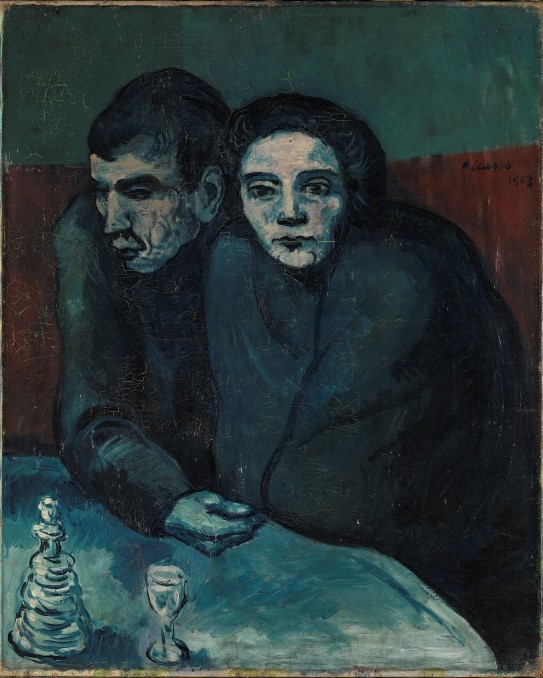Ménage de Pauvres, Poor Couple in a Café
Pablo Picasso
Transcription
Narrator:
"Poor Couple in a Café" is a painting from what is known as Picasso's blue period. A period with a dramatic history.
In the year 1900, Pablo Picasso and his friend Carles Casagemas travel to Paris from their hometown of Barcelona.
The two are 19-20 years old, and in Paris they fully embrace the artistic life. They paint all day, spend the evenings in cafes and cabarets, sleep with their models. Picasso's friend Casagemas describes their studio as a "dirty arcadia", a shabby artist's idyll.
But Casagemas is unhappily in love. And after a year in Paris, he commits suicide after trying to shoot the woman who doesn't want to be with him.
And after his friend's death, something happens to Picasso's art. Before this, his paintings have been characterized by the modern, cheerful life in Paris, explosions of color and activity.
But in the following years, Picasso paints those who stand on the side of this world. The poor. Women drinking absinthe alone. Prostitutes. The lonely ones. Blind. Hungry. Outsiders.
The colors in his paintings disappear. His palette shrinks to various shades of blue and creamy white. And this will be the start of the blue period.
Picasso himself said that it is Casagema's death that makes him start painting in this way. But art historians are unsure whether we should trust Picasso entirely here. This was possibly a change that was underway even before the friend died.
What we do know is that the new style is not an instant success. Picasso's blue pictures sell poorly at first.
But in 1917 this picture is nevertheless bought - by another outsider. A small country that has recently gained its independence. The National Gallery saw the opportunity to buy “Poor Couple in a Café” and it was brought to Norway in 1917.
And that's how the picture ended up here - at the National Museum.